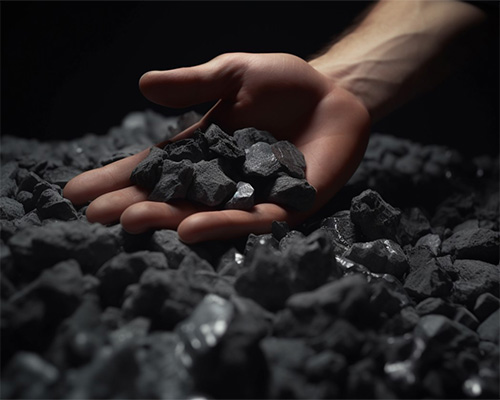Where Is Tantalum Mined
What is Tantalum, the Rare Metal?
Tantalum is a rare metal that occurs at 0.0002 per cent in the Earth’s crust. In nature, it is found together with niobium. Numerous minerals contain tantalum; however, tantalum minerals (Ta/Nb ≥ 1) are few. The principal industrially significant tantalum minerals are: (Fe, Mn)(Ta, Nb)₂O₆, FeTa₂O₆, (Na, Ca)Ta₂O₆ and (Y, Ca, Ce, U, Th)(Nb, Ta, Ti)₂O₆.

A Brief History of Tantalum and Niobium Metallurgy
(1) In 1801, the British chemist Hart Chet discovered the element niobium; in 1802, the Swedish chemist Anders Gustaf Ekberg discovered the element tantalum.
(2) In 1865, the Swiss chemist Ma Lignac developed the separation of tantalum and niobium by fractional crystallisation.
(3) In 1866, niobium metal was produced for the first time by reducing niobium chloride with hydrogen at a high temperature.
(4) In 1903, malleable tantalum metal was obtained for the first time by reducing a sodium fluoride–tantalum complex system.
(5) In 1922, tantalum powder was successfully produced by electrolytic salt fusion, thereby enabling industrial-scale production of tantalum.
(6) In 1944, the method of carbon reduction of niobium was invented, thereby establishing the basis for the industrial production of niobium.

The world’s first and second largest tantalum mines are Wodgina and Greenbushes, both located in Australia. Tantalum occurs primarily in tantalite, niobium ore and coltan. In addition, tantalum is an important resource in cassiterite, where it exists isomorphically. It is very difficult to separate tantalum from cassiterite using beneficiation methods, as it is incorporated into the metallurgical slag during tin smelting. Given that mineral resources are decreasing and tantalum is becoming diluted, this type of tin slag tantalum resource has become an important source of tantalum raw material. Guangxi, Malaysia, Indonesia, Yunnan, Burma and Thailand have the largest tantalum deposits in the tin belt, with Thailand and Malaysia supplying significant quantities of tantalum raw materials.
Due to the decline in tantalum deposits, the supply of tantalum raw materials has become increasingly scarce. Consequently, the utilisation of both primary and secondary tantalum resources is gaining importance. Currently, these two sources account for approximately 10 per cent to 20 per cent of the total supply of tantalum raw materials.
Distribution of Tantalum Resources Worldwide
As a rare metal, the amount of tantalum resources on Earth is relatively small compared with other metals. The proven tantalum resources are primarily distributed in Australia and Brazil. These two reserves are sufficient to meet the expected demand. In Australia, almost 62 per cent of the world’s tantalum reserves are located, followed by Brazil with 36 per cent of the total reserves.
According to the U.S. Geological Survey (USGS) report published in 2015, there are more than 100 000 tonnes of tantalum reserves worldwide, with 67 000 tonnes in Australia and approximately 36 000 tonnes in Brazil. Tantalum deposits are also present in the United States, Burundi, Canada, the Democratic Republic of the Congo (DRC), Ethiopia, Mozambique, Nigeria and Rwanda.

 Bars
Bars
 Beads & Spheres
Beads & Spheres
 Bolts & Nuts
Bolts & Nuts
 Crucibles
Crucibles
 Discs
Discs
 Fibers & Fabrics
Fibers & Fabrics
 Films
Films
 Flake
Flake
 Foams
Foams
 Foil
Foil
 Granules
Granules
 Honeycombs
Honeycombs
 Ink
Ink
 Laminate
Laminate
 Lumps
Lumps
 Meshes
Meshes
 Metallised Film
Metallised Film
 Plate
Plate
 Powders
Powders
 Rod
Rod
 Sheets
Sheets
 Single Crystals
Single Crystals
 Sputtering Target
Sputtering Target
 Tubes
Tubes
 Washer
Washer
 Wires
Wires
 Converters & Calculators
Converters & Calculators
 Write for Us
Write for Us
 Chin Trento
Chin Trento



